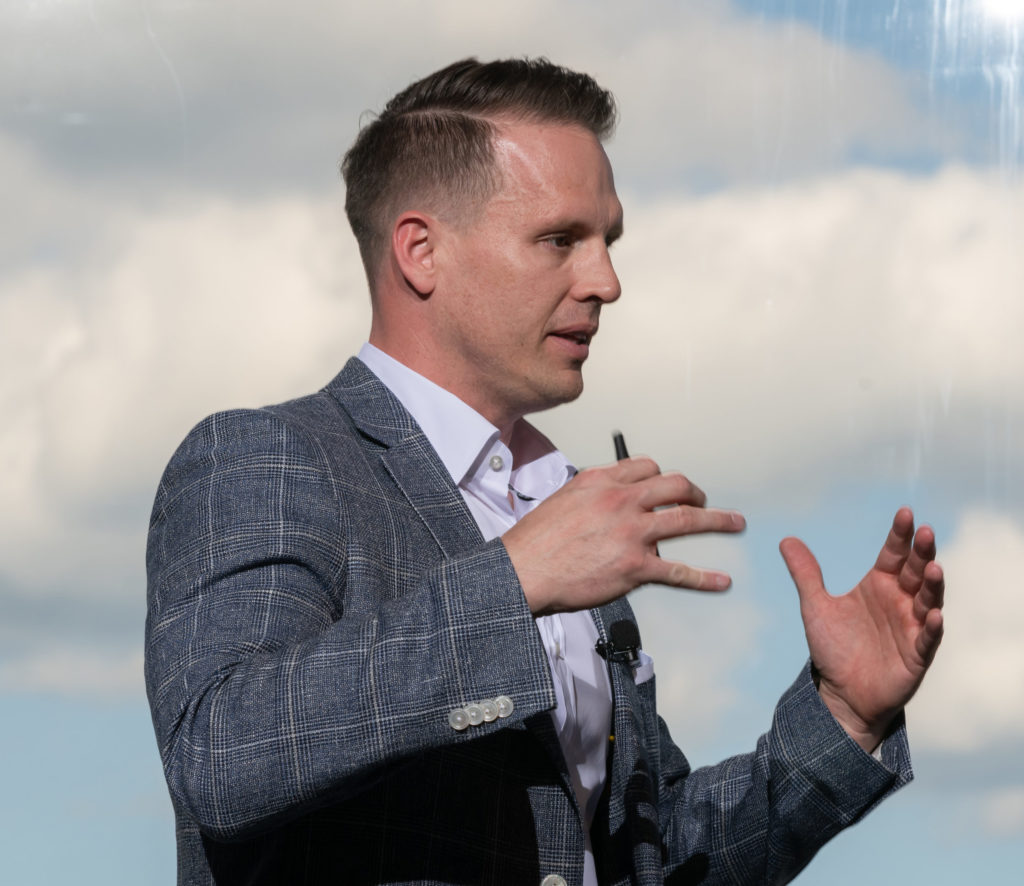Reimagining Employee Recognition: Finding Balance and New Opportunities for Engagement


Every Tuesday at 9 a.m., the employee recognition-and-engagement platform AwardCo hosts a meeting known as RTG, “Recognize The Good.” This year, these meetings have been well attended, and not just because people are starting to return to the office following a hybrid-work culture or because of what AwardCo does per se. “A lot of people come to [the RTG meeting] because we focus on the good and it really drives our purpose," said Steve Sonnenberg, co-founder and CEO of AwardCo. “We actually announced something called goodness grants, to recognize people in the community doing good things and we want to reward them with a monetary gift and let them spend it on themselves.”
Purpose-driven organizations tend to outperform those that are not. And when people leave organizations, it’s typically not because of compensation issues, but lack of purpose. Sonnenberg and his colleague Sam Stroman, VP of marketing, discussed how organizations can become more purpose-driven in a thought leadership spotlight they presented at From Day One’s Boston conference earlier this year. Highlights:
Applying Maslow’s Hierarchy of Needs to the Workplace
People have needs. In Maslow’s hierarchy, the gist is that human beings have needs that must be met before the desire to fulfill the next level of needs sets in. In the first place, we need air, water, food, shelter, and safety. “It's hard to tackle whether you belong in the tribe when we’re being chased by mammoths,” said Stroman. When you satisfy the most basic needs, you can start focusing on others: safety needs, social needs, esteem needs, and self-actualization. In business, compensation, which hopefully meets the standard of a living wage, exists to satisfy basic needs. Our human needs are tied to powerful psychological and biological processes in our brains; the survival instinct is fueled by adrenaline. Psychological needs are tied to neurotransmitters such as serotonin and dopamine. “We want to piggyback on those chemicals with our recognition programs to create the meaning that we're looking for,” said Stroman.
Understanding the Value Cycle
As with hormones, the pattern of recognition and rewards works in a cyclical manner. When an employee demonstrates a value, they are recognized by a manager peer and the employee feels rewarded. “Values are reinforced within the value cycle; purpose drives values; recognizing values drives behavior, behavior builds culture,” said Sonnenberg.
These values need to be recognized on a daily basis, the speakers said.

Part one: Demonstrate! To demonstrate values, employees must know the values, which, ideally, rest at the intersection of aspirational and realistic. To that end, you must communicate those values effectively. They have to be more than words on a wall or part of an onboarding package. “You need to take those values and provide a way to recognize them on a daily basis so those values can come alive,” said Sonnenberg. “Team leaders and managers are those who have to embody them and demonstrate them to their teams.”
Part Two: Recognize! Because the “how” needs to match the “who,” there are different recognition personas that need attention. “I am pretty shy, I am someone who goes on Facebook and removes my birthday,” said Sonnenberg. His persona would be what AwardCo dubs Shy Sharon, someone who dislikes public hoopla, favoring private notes and encouragement instead. By contrast, Sam is a Heartfelt Hannah. “My wife makes fun of me all the time that I am the softie. I love just a couple of words of encouragement.” The key is that you have to know your employees.
Part Three: Reward! Humans are not entirely fueled by money. People don’t leave organizations because of money, they leave because they don’t feel connected. That’s why it’s important to reward them with true value. At AwardCo, that means “choice.” Historically, organizations favored one-size-fits-all approaches. To encourage wellness, for example, one organization might dole out gym memberships to all employees. Yet a sizable segment of the workforce won’t use that benefit not because they don’t believe in health and wellness but because they prefer exercising in other ways, such as doing yoga at home or hiking.
Feeling value comes from receiving actual value, in words, deeds, and rewards.
How a Well-Aligned Organization Works
In a well-aligned organization, you can match the values with the needs, following Maslow’s model. If you value teamwork, you want people to feel a sense of belonging: this means celebrating everyone regardless of status. Many people miss out on recognizing the sense of belonging that comes from the onboarding program. Inspirational messages, service anniversaries, birthdays, and holidays constitute examples of simple ways you can recognize employees and create a sense belonging. Innovation, hard work, and problem solving are achievement-based values; they cannot be given, they have to be earned. So recognize your high performers: this drives value adoption, incentivizes team players, and rewards results.
Editor’s note: From Day One thanks our partner, AwardCo, for sponsoring this thought leadership spotlight.
Angelica Frey is a writer and a translator based in Milan and Boston.
The From Day One Newsletter is a monthly roundup of articles, features, and editorials on innovative ways for companies to forge stronger relationships with their employees, customers, and communities.